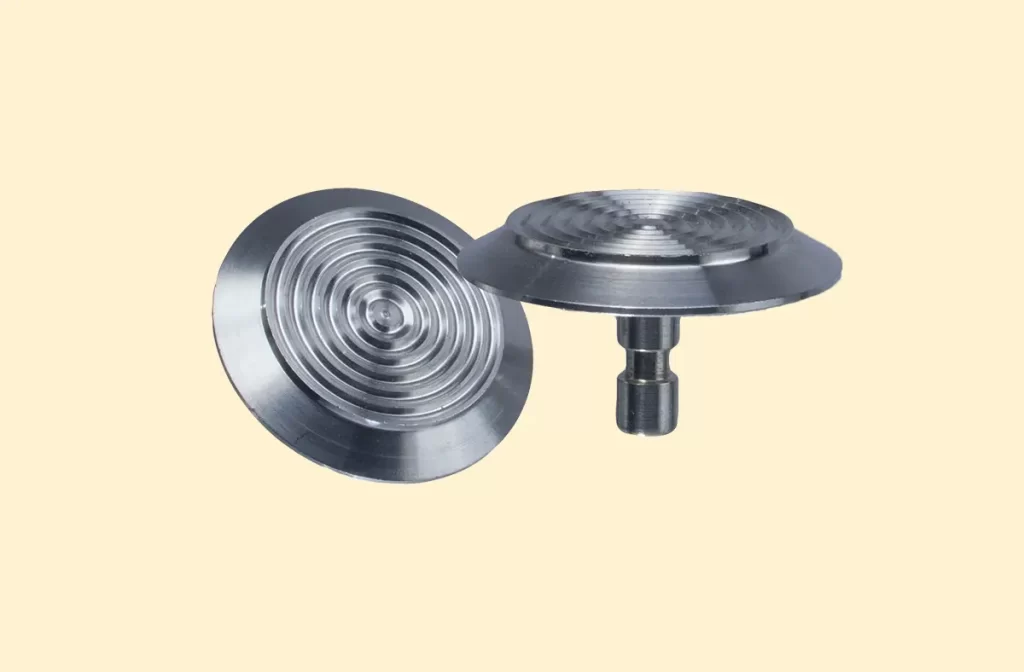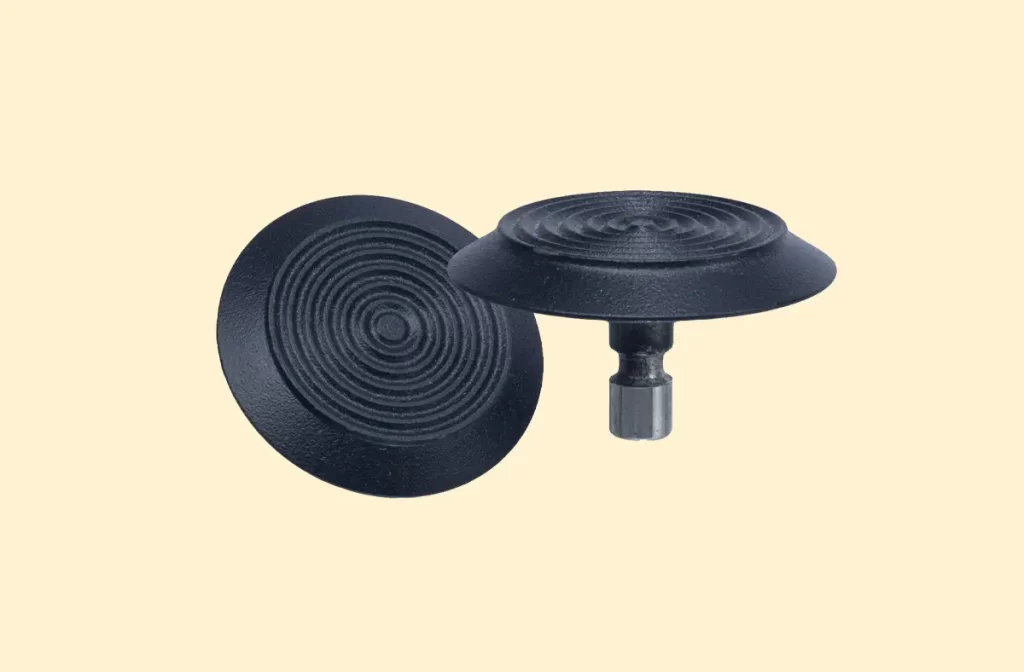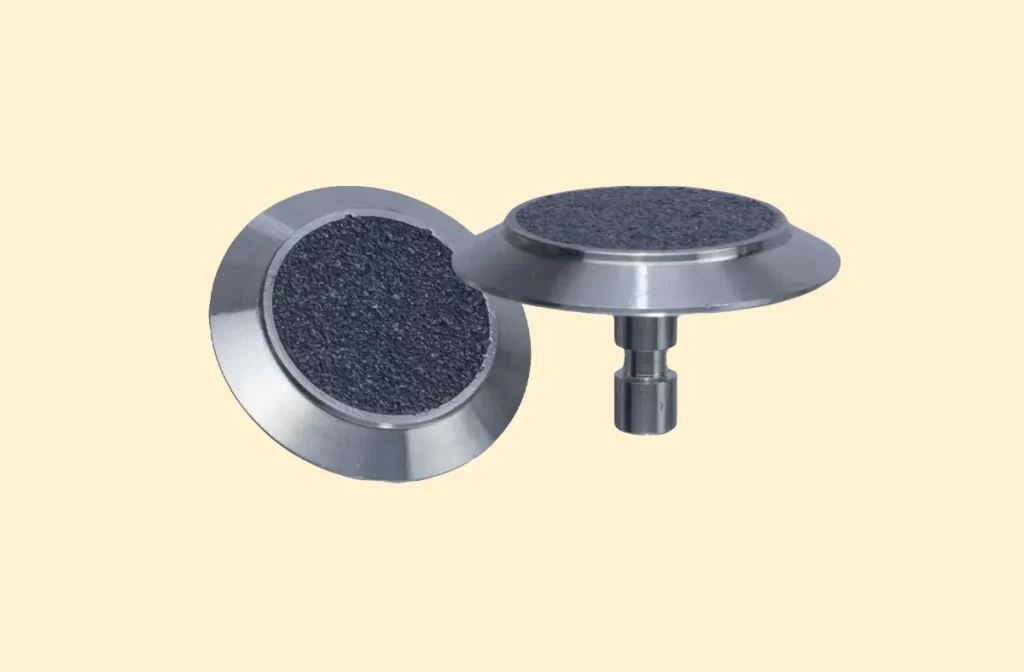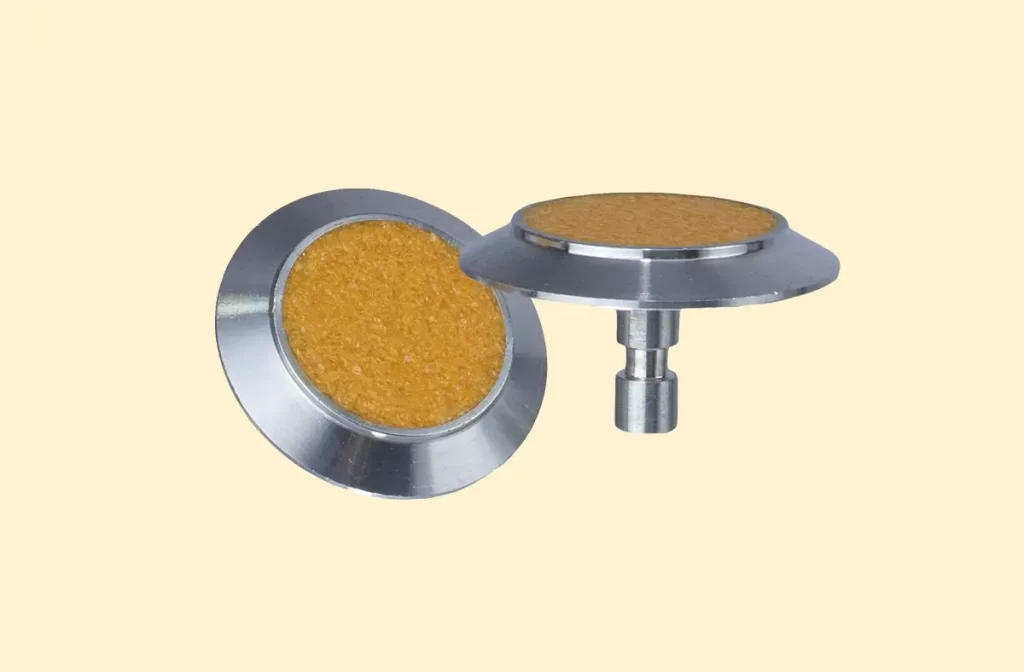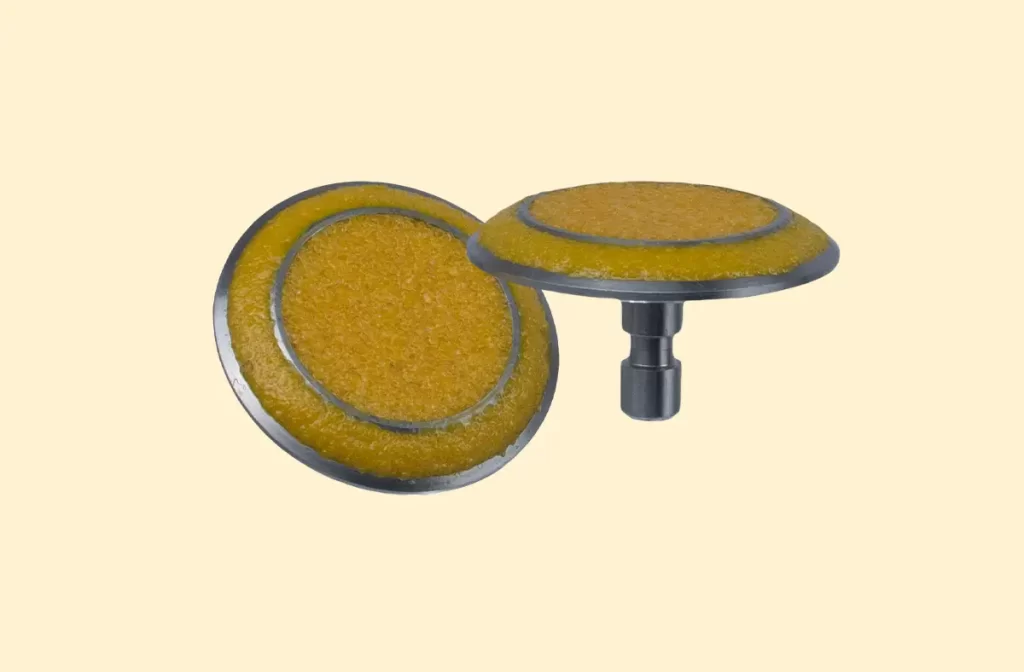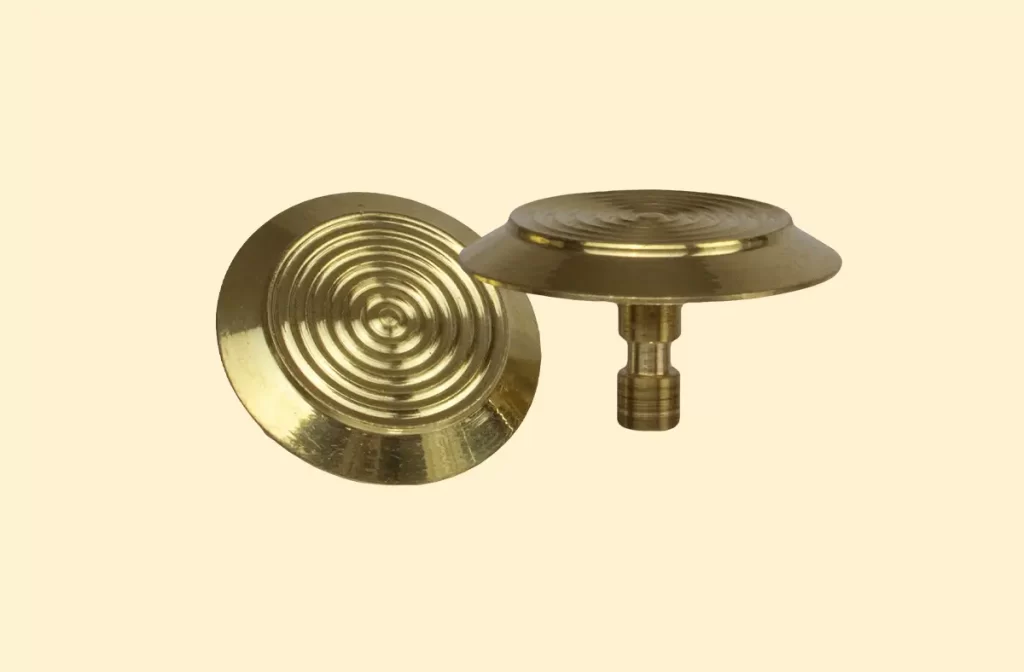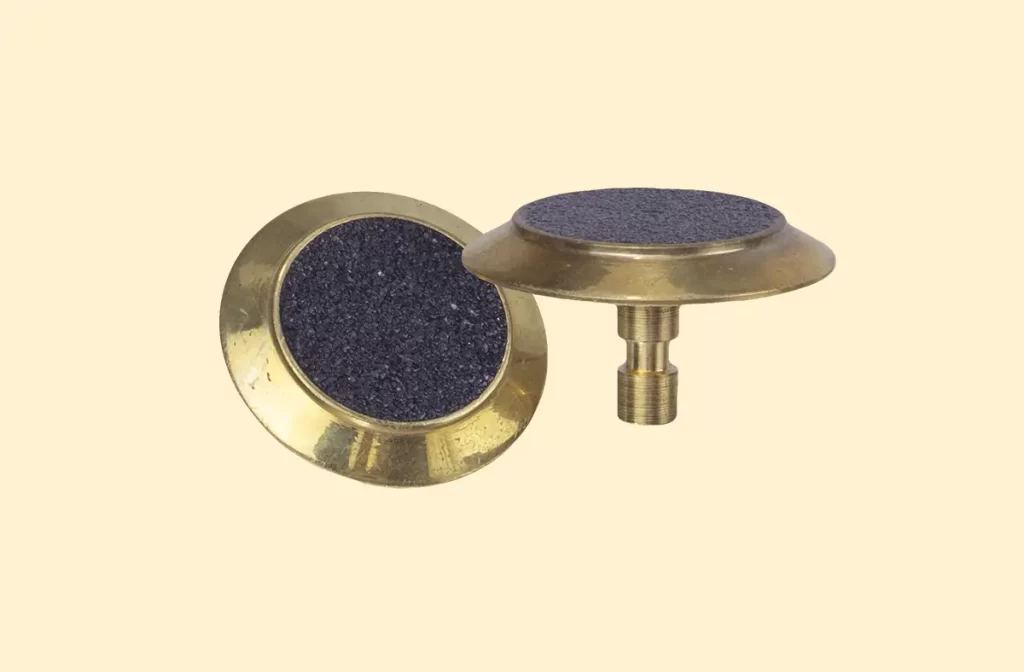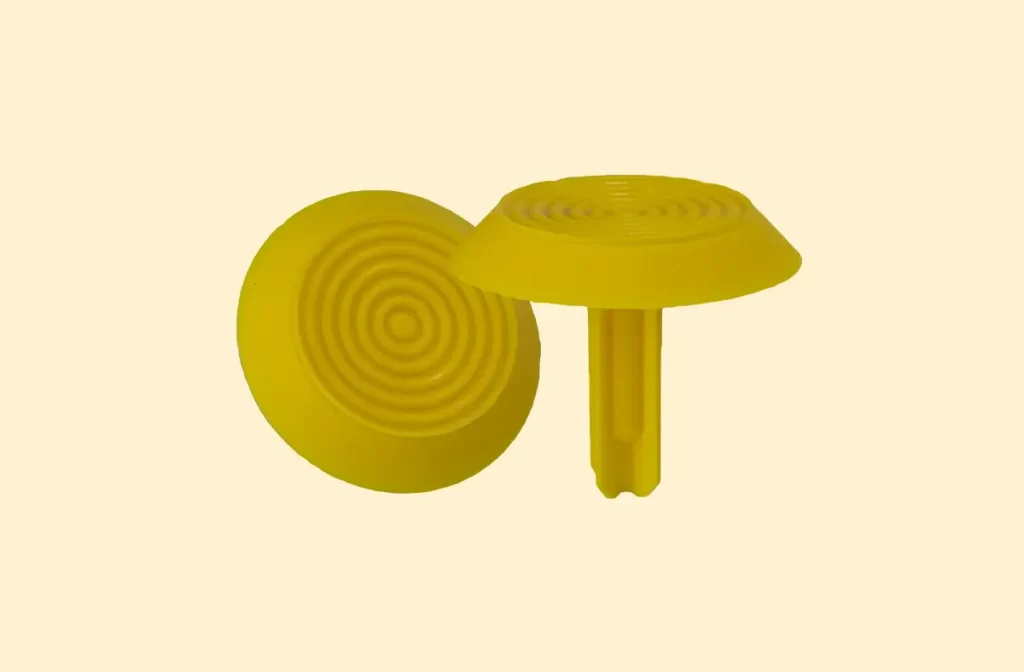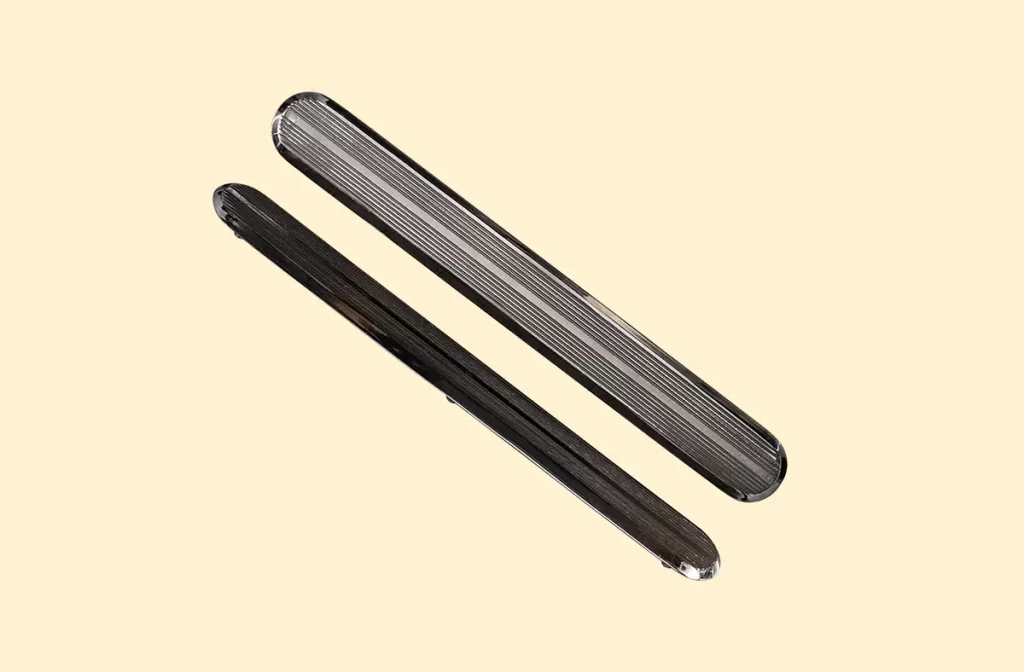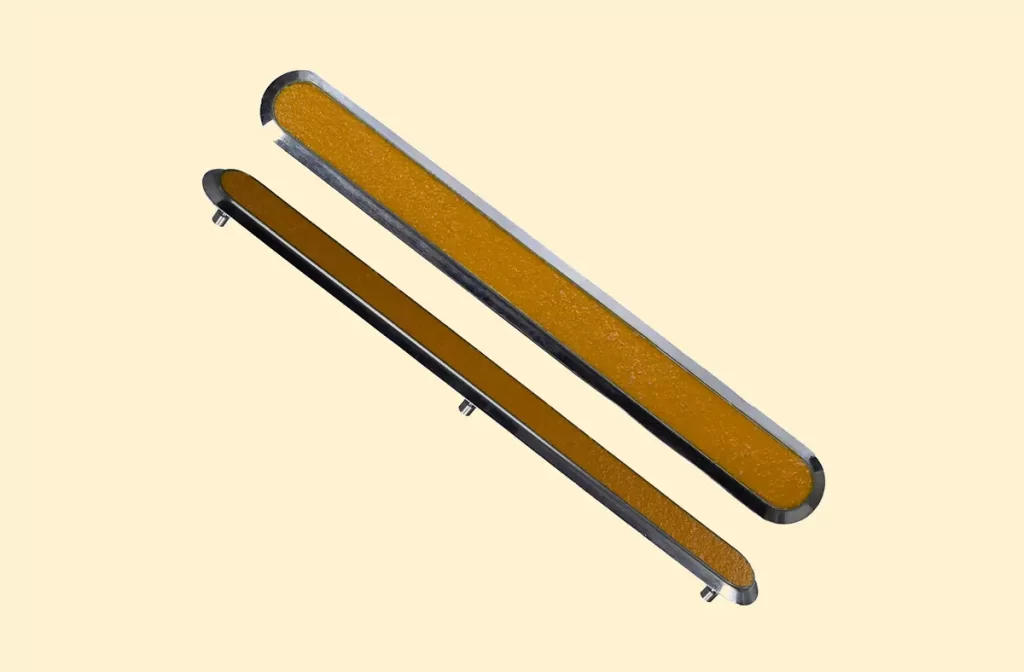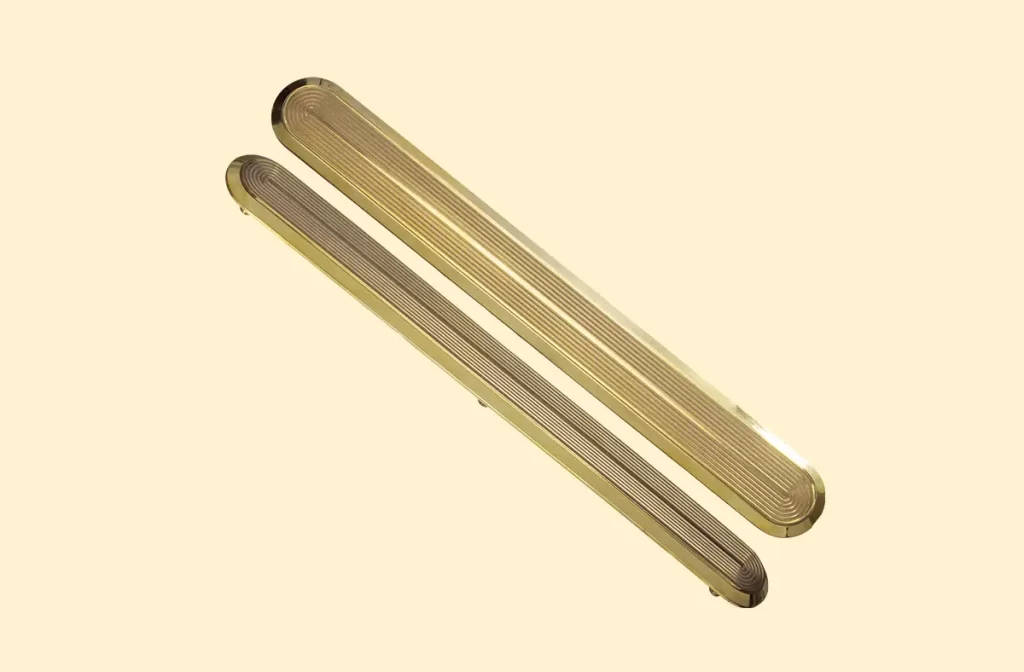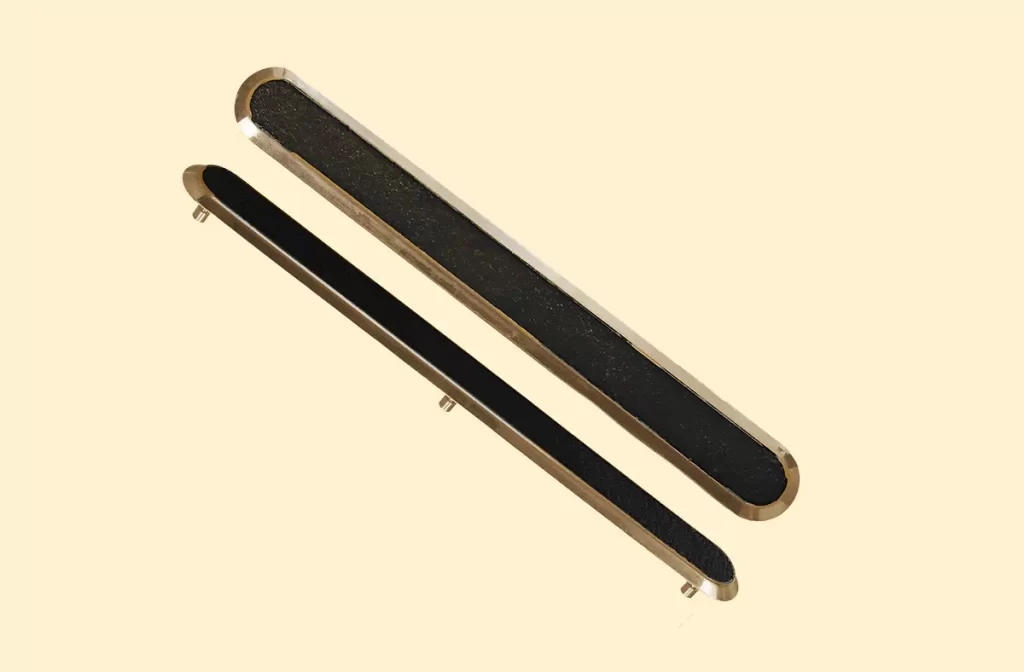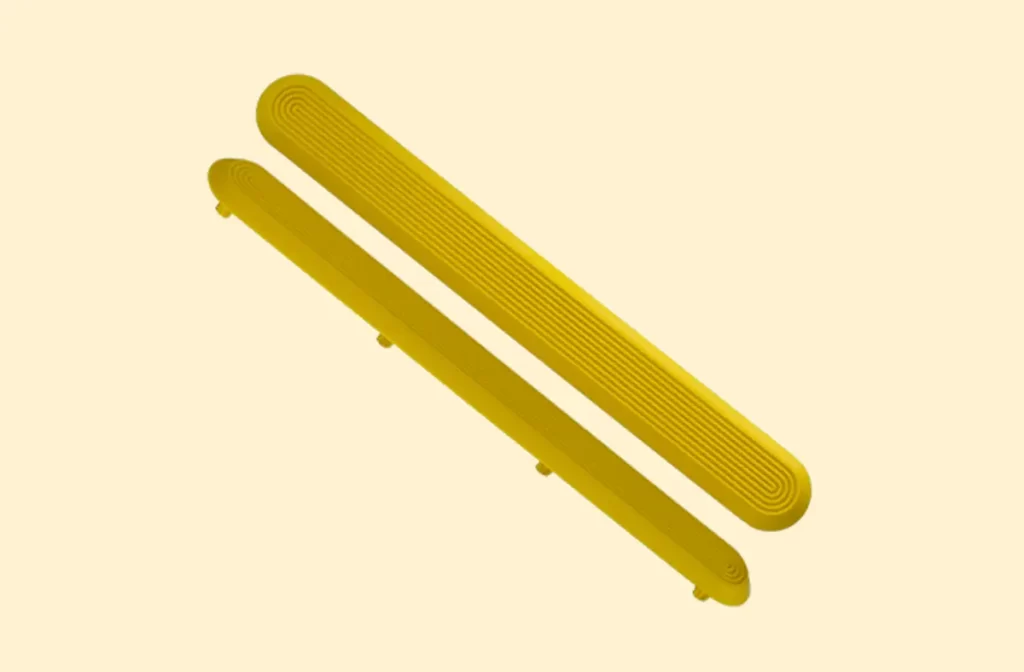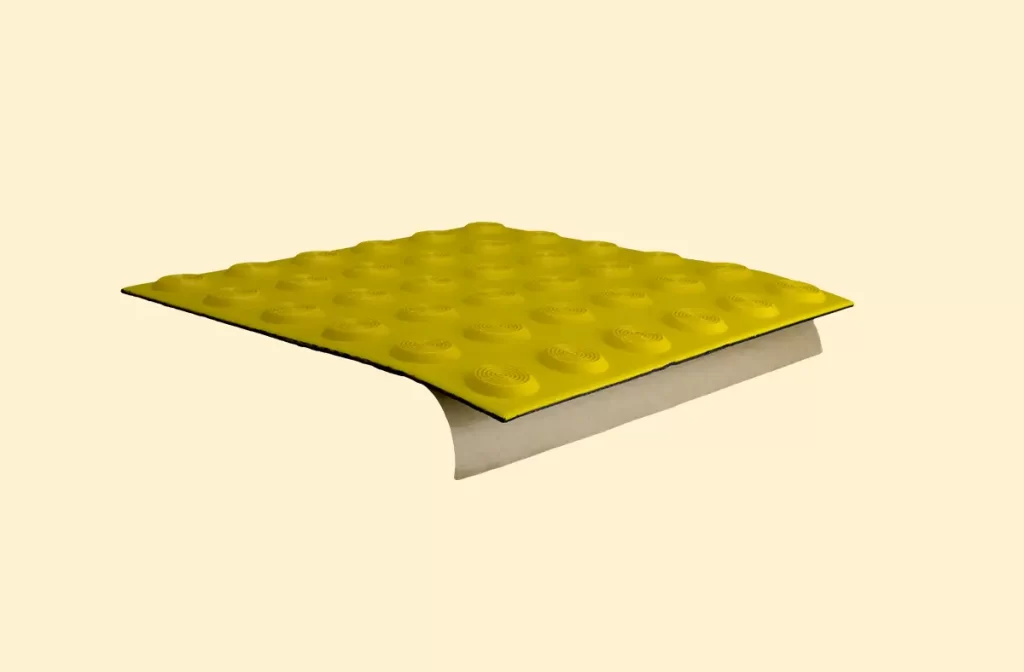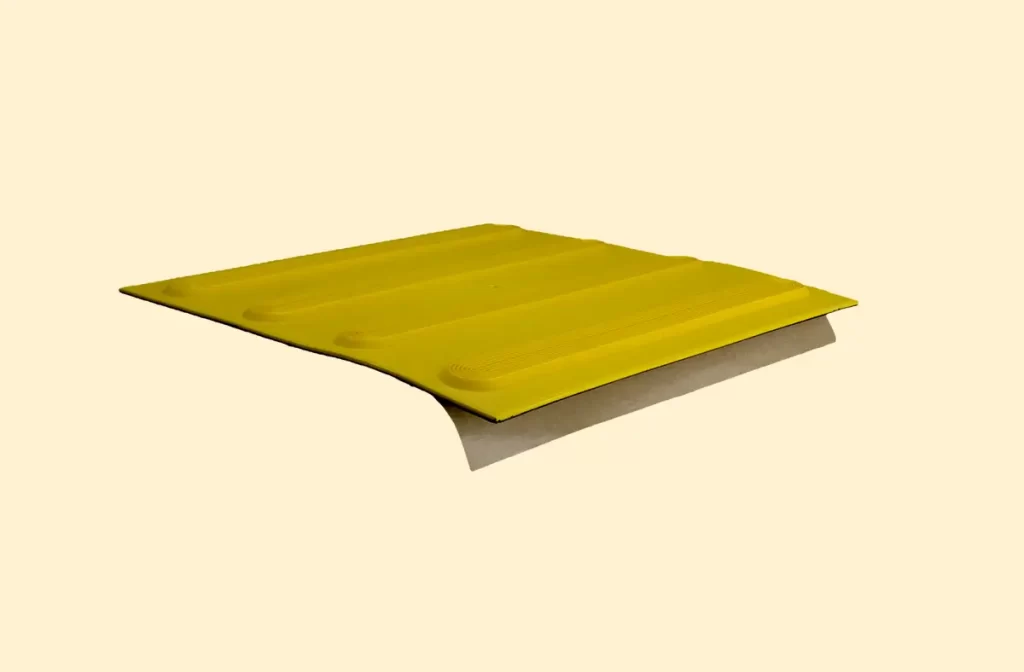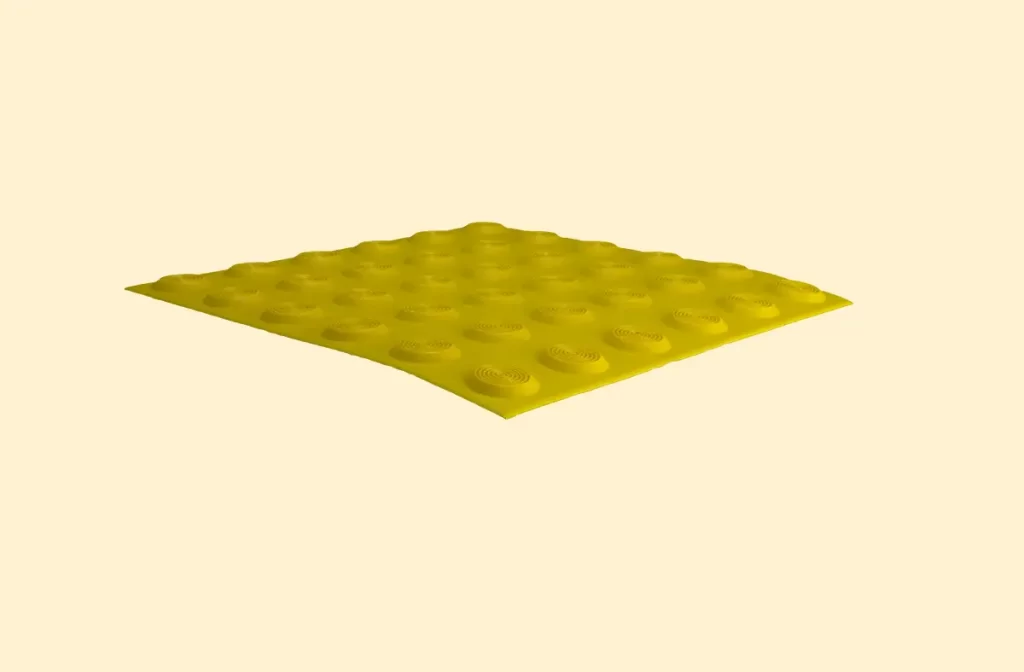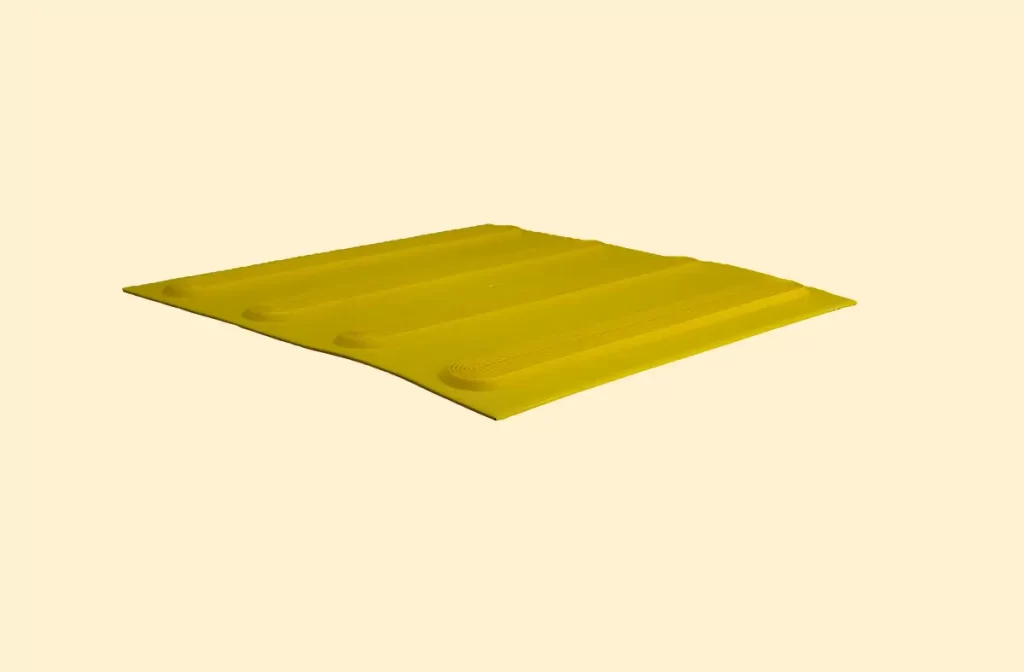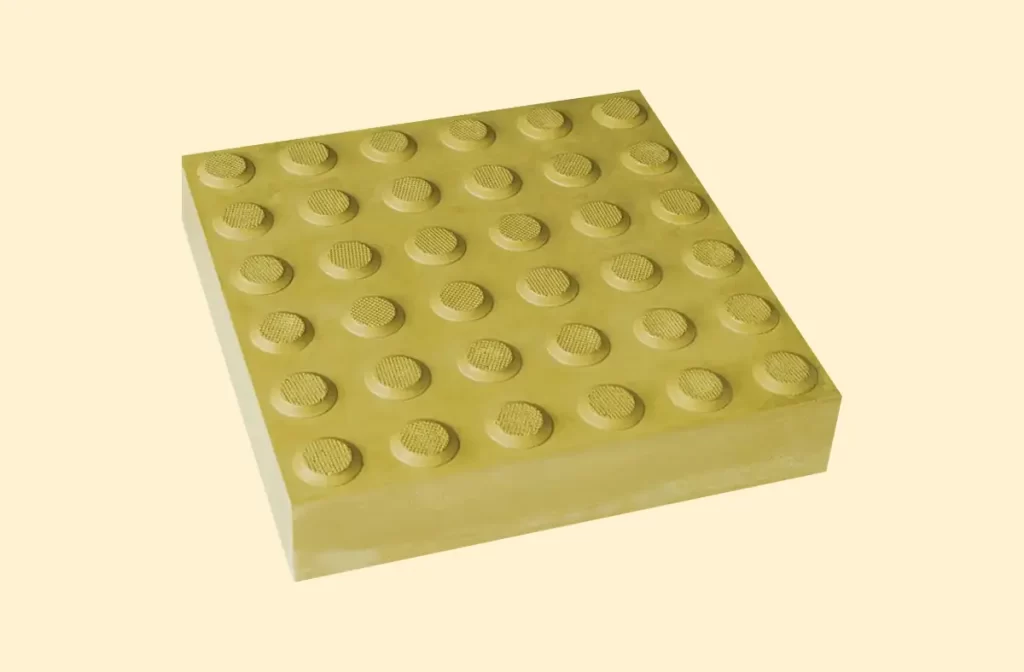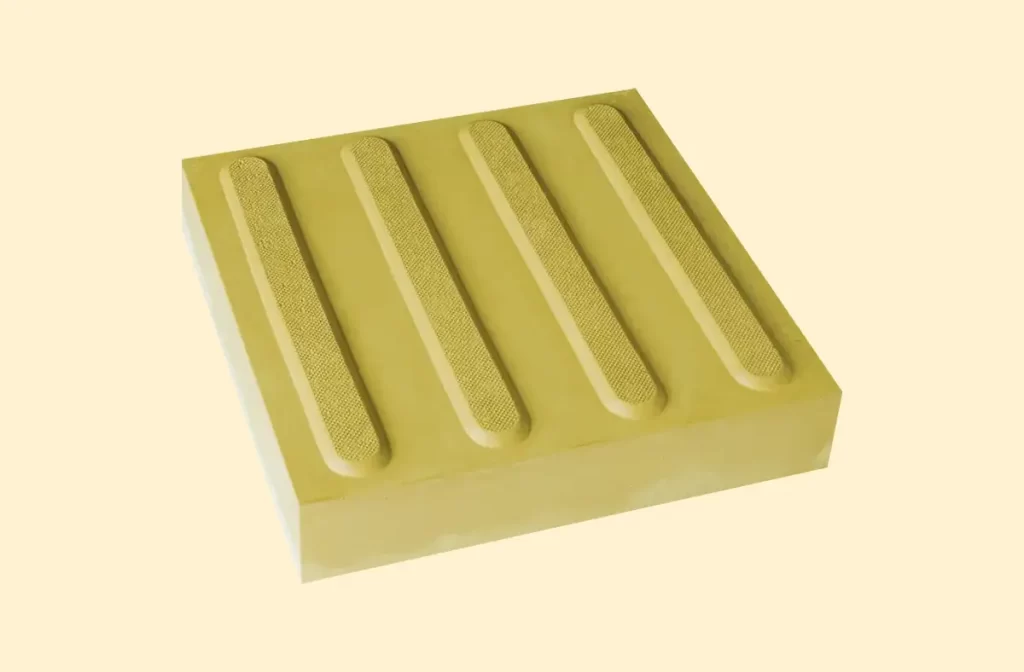Tactile Indicators
Tactile indicators give the necessary tactile cue to warn and guide allowing freedom of movement.
Our range has always been there assisting and has been developed over years to ensure a durable solution that meets the requirements of the visually impaired and ensures a lasting aesthetically pleasing result. Successfully installed by our experienced Freedom Works Installers in multiple accessible projects across New Zealand our range is considered tried and proven, helping the accessibility community to navigate the landscape safely and with confidence.
Frequently Asked Questions
Tactile Indicators are a type of tactile ground surface indicator (TGSI) manufactured by Freedom Strategies. TGSI are designed to provide tactile warning and guidance to people who are blind or vision impaired. Tactile Indicators are available in a range of materials, including stainless steel, brass, and polyurethane, and can be installed on a variety of surfaces, including concrete, asphalt, and tile.
Tactile Indicators come in two main types: directional and hazard/warning. Directional indicators are used to guide people in a particular direction, while hazard/warning indicators are used to alert people to a potential hazard.
Directional indicators typically consist of a series of raised studs or bars that are arranged in a linear pattern. Hazard/warning indicators typically have a more complex pattern, such as a series of raised dots or stripes.
Tactile Indicators are used in a wide variety of settings, including public sidewalks, train stations, airports, shopping malls, and office buildings. They are also used in private homes to provide assistance to people who are blind or vision impaired.
Here are some of the benefits of using Tactile Indicators:
- They are durable and can withstand heavy traffic.
- They are resistant to corrosion and weathering.
- They are easy to install and maintain.
- They are available in a range of materials and finishes to match any environment.
- They are compliant with all relevant accessibility standards.
If you are looking for a high-quality and reliable tactile ground surface indicator, Guidemaster Tactile Indicators are a great option.
Tactile Ground Surface Indicators includes this products in:
- Stainless Steel TGSI
- Stainless Steel with Carborundum TGSI
- Brass TGSI
- Brass with Carborundum TGSI
- Polyurethane TGSI
- Tile Tactile TGSI
- Concrete Paver TGSI
Feel free to contact us directly for more details.
Yes, there is a New Zealand-specific standard for tactile indicators: AS/NZS 1428.4:2002 – Tactile indicators. This standard specifies the requirements for the design and application of tactile ground surface indicators (TGSI) for new buildings to ensure safe and dignified mobility of people who are blind or vision impaired.
Complete Code Compliance:
- NZTA RTS14—Land Transport New Zealand— Guidelines for facilities for the blind and vision impaired
- AS/NZS 1428.4.1:2009—Design for access and mobility, Part 4
- NZS4121:2001—Design for access and mobility – building and associated facilities
- AS/NZS4586:2004 – Slip resistance classification of new pedestrian surface materials
- Land Transport’s Pedestrian Planning and Design Guide
- The Royal N.Z. Foundation for the Blind Design Guide Recommendations/Specifications
TGSI products are typically installed in areas where people who are blind or vision impaired may need assistance with navigation or where there is a potential hazard. For example, directional indicators may be installed on sidewalks to guide people to a crosswalk or intersection. Hazard/warning indicators may be installed near stairs, elevators, or other potential hazards.
Here are some specific examples of where TGSI products can be installed:
- At the top and bottom of stairs
- In front of elevators
- At the edge of platforms
- At the entrance to buildings and other public spaces
- At crosswalks and intersections
- Around ramps and other changes in grade
- Near hazardous areas, such as construction zones or pools
When installing TGSI products, it is important to follow the manufacturer's instructions carefully. This will ensure that the products are installed correctly and will provide the maximum benefit to people who are blind or vision impaired.
TGSI products offer a number of benefits, including:
- Improved safety and mobility for people who are blind or vision impaired: Guidemaster
- TGSI products provide tactile cues that help people who are blind or vision impaired to navigate safely and independently.
- Compliance with accessibility standards: Guidemaster TGSI products are compliant with relevant accessibility standards, such as AS/NZS 1428.4:2002 and NZTA RTS14.
- Durability and longevity: Guidemaster TGSI products are made from durable materials and are designed to withstand heavy traffic and harsh weather conditions.
- Easy installation and maintenance: TGSI products are easy to install and maintain, making them a cost-effective and low-maintenance solution.
- Aesthetics: TGSI products are available in a range of finishes to match any environment.
In addition to these benefits, TGSI products can also help to create a more inclusive and accessible environment for everyone.
Here are some specific examples of how Guidemaster TGSI products can improve safety and mobility for people who are blind or vision impaired:
- Directional indicators can help people to find their way to crosswalks, intersections, and other important destinations.
- Hazard/warning indicators can alert people to potential hazards, such as stairs, elevators, and construction zones.
- Raised letters and Braille on signs and plaques can help people to identify different areas and amenities.
By installing TGSI products, you can help to create a more safe and accessible environment for everyone, regardless of their abilities.
TGSI products are sustainable for the environment in a number of ways, depending on the materials used.
Stainless steel is a highly recyclable material, and stainless steel TGSI products are made from a high percentage of recycled stainless steel. This means that these products can be recycled at the end of their lifespan, which reduces waste and conserves natural resources. Stainless steel is also resistant to corrosion and weathering, which means that it will last for many years without needing to be replaced.
Brass is a durable alloy that is also recyclable. Brass TGSI products are made from a high percentage of recycled brass. This means that these products can also be recycled at the end of their lifespan, which reduces waste and conserves natural resources. Brass is also resistant to corrosion and weathering, which means that it will last for many years without needing to be replaced.
Aluminium is another highly recyclable material. aluminium TGSI products are made from a high percentage of recycled aluminium. This means that these products can also be recycled at the end of their lifespan, which reduces waste and conserves natural resources. Aluminium is also lightweight and strong, making it a good choice for TGSI products.
Santoprene is a thermoplastic elastomer that is known for its durability, resilience, and chemical resistance. It is also recyclable. Santoprene TGSI products are made from a high percentage of recycled Santoprene. This means that these products can also be recycled at the end of their lifespan, which reduces waste and conserves natural resources. Santoprene is also resistant to weathering and chemicals, making it a good choice for TGSI products.
Carborundum is a silicon carbide mineral that is known for its hardness and durability. It is not recyclable. Carborundum TGSI products are made from a high percentage of Carborundum. This means that these products will last for many years without needing to be replaced. However, it is important to note that Carborundum is not recyclable, so it is important to dispose of these products properly at the end of their lifespan.
Overall, TGSI products are sustainable for the environment. They are made from durable and long-lasting materials, many of which are recyclable. Is also committed to sustainable manufacturing practices.
Specific sustainability features for New Zealand:
- TGSI products are made from high-quality materials that are designed to withstand the New Zealand climate, which can be harsh in some areas. This means that these products will last for many years without needing to be replaced, which reduces waste and environmental impact.
- TGSI products are also compliant with all relevant New Zealand standards, including AS/NZS 1428.4.1:2009 and NZTA RTS14. This means that these products are safe and effective for use in New Zealand.
- Is committed to sustainable manufacturing practices and uses renewable energy sources whenever possible. This helps to reduce the environmental impact of
TGSI products.
Overall, TGSI products are a sustainable and environmentally friendly choice for tactile ground surface indicators in New Zealand.


